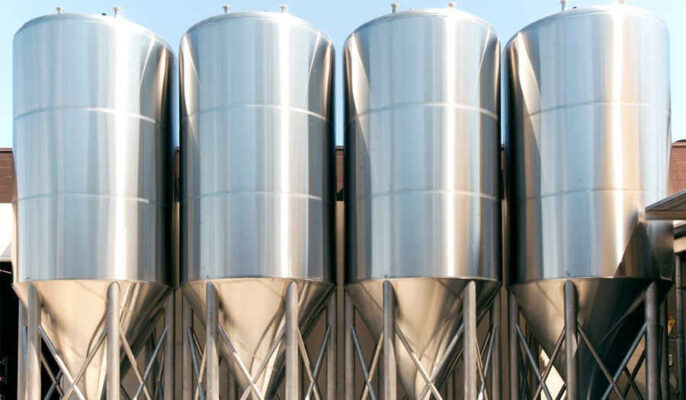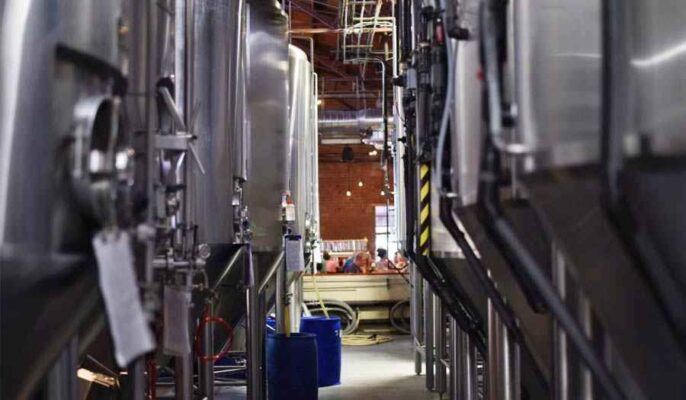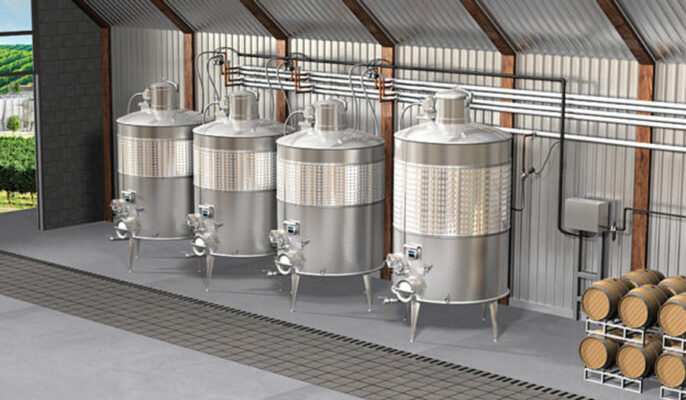Homebrewing and craft brewing are more popular than ever. While the big brands still dominate the market, there are over 8,000 craft breweries in the United States alone. More people are discovering the joys of brewing their own beer at home too.
But starting your own microbrewery or home brewery requires significant investment in equipment. New stainless steel tanks, fermenters, filters and other gear can cost tens of thousands of dollars. Many small scale starter breweries and homebrewers want to minimize initial capital costs.
This guide covers all the cheap brewery equipment options to help startups and hobby brewers. We look at how to assemble an affordable brewhouse on a budget.
安価な醸造設備の概要
Cheap brewing equipment allows you to dip your toe into commercial beer production or homebrewing without breaking the bank. Here are the key things to know:
- Used equipment is plentiful from breweries expanding or closing down. Stainless steel holds up over decades.
- Imported equipment from China costs a fraction compared to U.S. or German manufacturers. Quality varies.
- Plastic fermenters avoid corrosion and are 1/10th the price of stainless steel. Great for homebrewing.
- Many equipment substitutes exist. e.g. keggles for kettles, propane burners vs steam systems.
- Going manual instead of automated reduces costs but increases labor.
- Buying kits is cheaper than piecing individual parts. Economies of scale.
- Focus on essential brewhouse gear first. Expand later. Start small.
Cheap brewing setups require more hands-on work but get the job done on a budget. Let’s look at equipping a full brewhouse step-by-step:
Guide to Key Brewery Equipment on a Budget
Here are the core vessels and systems needed for brewing with budget options for each:
| 設備タイプ | Cheap Options |
|---|---|
| マッシュ・タン | Cooler mash tun, plastic bucket, rectangular food-grade plastic storage container |
| ブリューケトル | Converted kegs (“keggles”), stainless steel restaurant equipment |
| 発酵タンク | Plastic buckets, modified kegs, plastic conical fermenters |
| 温度管理 | Johnson A419 temperature controllers, inkbird controllers, brew belts, heat pads, cooling coil in keg |
| Boil Kettle | Converted kegs, Bayou Classic propane burners or King Kooker turkey fryer |
| チラー | Immersion chiller, plate chiller from China, no-chill by racking to covered kettle |
| Bottling or Kegging | Used commercial bottler/kegger, budget bench cappers, kegging system kit |
| クリーニングと衛生管理 | Restaurant grade CIP spray balls, peracetic acid sanitizer |
This minimal brewhouse setup allows 1-3 BBL commercial production or 5-10 gallon homebrew batches. Let’s explore the options in more detail.
Types of Cheap Brewing Tanks
Fermentation and aging of beer requires temperature controlled stainless steel or plastic tanks. Here are some thrifty alternatives to expensive conical fermenters:
| タンクタイプ | 価格帯 | Volume Range | 長所 | 短所 |
|---|---|---|---|---|
| Used Stainless Steel | $300-$1000 | 7-30 BBL | Lasts forever, jacketed available | May have damage or leaks |
| Plastic Conicals | $100-$300 | 3-15 gallons | Improved shape, compact | Scratches over time |
| Modified Kegs | $50-$150 | 5-15 gallons | Stackable, readily available | Round shape limits yeast collection |
| プラスチックバケツ | $10-$50 | 3~6ガロン | Very cheap, widely available | High risk of infection, poor seals |
Cheap Boil Kettles and Burners
The boil kettle is where wort is boiled with hops for aroma and bitterness. You need a strong heat source and kettle that won’t scorch.
| 設備 | 価格帯 | Volume Range | 加熱方法 | 長所 | 短所 |
|---|---|---|---|---|---|
| Converted Keg | $100-$200 | 10-15 gallons | Propane or Electric | Multi-purpose vessel | Time consuming to modify |
| Bayou/King Kooker | $100-$200 | 10-55 gallons | Propane | High BTU for fast boiling | Outdoor use only |
| Electric Brewery Pot | $100-$300 | 5-15 gallons | 電気 | 正確な温度制御 | Slow heating, high energy use |
Propane offers the most bang for your buck for heating kettles and mash tuns. But it requires outdoor use. Electric gives more temperature precision at the cost of slow heating and high energy use.
Cheap Options for Cooling Wort
Once boiling is complete, the hot wort must be rapidly cooled to pitch yeast. Here are some thrifty cooling solutions:
| 冷却方法 | 価格帯 | 長所 | 短所 |
|---|---|---|---|
| 浸漬チラー | $50-$150 | Fast cooling in kettle | Risk of contamination, water use |
| No-Chill | $0 extra | Free, convenient | Slow cooling, less hop aroma |
| プレート・チラー | $100-$300 | Efficient, closed transfer | Must be kept clean |
The immersion chiller is a common budget-friendly option. But avoiding cooling equipment entirely by racking to a covered kettle to cool overnight (“no-chill”) gets the job done with no added costs.
Affordable Fermentation Temperature Control
Consistent fermentation temps are critical for quality beer. Here are cheap ways to control:
| 方法 | 価格 | 長所 | 短所 |
|---|---|---|---|
| ブリューベルト | $20 | Localized heating | Only heats, no cooling |
| Temperature controller | $50 | Precise temp control | Requires fridge or chamber |
| Space heater | $30 | Heating for chamber | Imprecise temperature |
Controlling temps doesn’t have to be expensive. A $20 brew belt combined with a space heater in a small chamber will do the trick on a tight budget.
Low Cost Options for Bottling and Kegging
You need equipment to package your beer for serving. Here are some value-oriented options:
| 設備 | 価格帯 | 長所 | 短所 |
|---|---|---|---|
| ベンチキャッパー | $20 | Inexpensive, manual | Slow, labor intensive |
| Used bottling line | $500-$5000 | Fast automation | Takes up space, repairs |
| ケグシステム | $200-$500 | Skip bottling, forced carbonation | Keg/tap costs, equipment needs |
For small scale use, a simple bench capper avoids the need for an expensive bottling line. Going with kegs instead eliminates bottling but has its own equipment costs.
Buying Cheap Brewing Equipment Kits
Purchasing a full brewery equipment kit is often cheaper than buying individual pieces. Common kits include:
- Homebrew starter kits – $100-$300, equipment for 5 gallon batches
- Nano brewery kits – $1000-$5000, 2-3 BBL brewhouses
- Turnkey brewery kits – $30,000+, up to 15 BBL, plug and play
While less customizable, kits simplify getting started and maximize value from economies of scale.
Cheap Options for Cleaning and Sanitation
Proper cleaning and sanitation are must-haves for brewing. Here are some budget cleaning solutions:
| 方法 | 価格 | 手続き | 長所 | 短所 |
|---|---|---|---|---|
| Peracetic acid | $1/gallon | Soak/circulate, rinse | Non-rinse sanitizer | Corrosive at high concentrations |
| Restaurant CIP | $300 | Hot rinse, pump spray ball | Reusable, effective | Labor for assembly, heating water |
| Carboy brush | $10 | Manual scrubbing | 安い | Very labor intensive |
Peracetic acid is an economical sanitizing agent. Adapting restaurant cleaning in place (CIP) equipment can automate cleaning tanks.
Suppliers for Cheap Brewing Equipment
Here are some recommended suppliers for deals on discounted brewing hardware:
| サプライヤー | 所在地 | 機材の種類 | 価格帯 |
|---|---|---|---|
| Adventures in Homebrewing | アメリカ | New tanks, kegs, kits | Low to high |
| MoreBeer! | アメリカ | Kits, pumps, burners, chillers | Low to high |
| Ontario Beer Kegs | カナダ | Used kegs, taps, parts | Very cheap |
| Brewhaus | 中国 | Kettles, burners, fermenters | Very cheap |
| Alibaba | 中国 | All brewhouse equipment | Very cheap |
| eBay | アメリカ | Motley used equipment | Very cheap |
| レストラン供給品 | アメリカ | Boilers, kettles, tanks | ミッドレンジ |
| Craigslist | Local | All used equipment | Wide range |
| Probrewer | アメリカ | Used commercial tanks | Mid to high |
Check brewing forums, Facebook groups and online marketplaces for deals as well. Homebrew clubs are also great for finding used equipment locally.

Typical Cost Ranges for Brewery Equipment
Here are rough price ranges for new budget-friendly brewing gear based on quotes:
| 項目 | Cheap Price Range | 詳細 |
|---|---|---|
| 20 BBL fermenter | $1000-$5000 | Used, scratched plastic or stainless |
| 3 BBL brite tank | $500-$2000 | Used/imported, unjacketed |
| 10 BBL boil kettle | $3000-$8000 | Imported/used stainless |
| 10 BBL mash tun | $2000-$6000 | Insulated plastic/stainless |
| プレート式熱交換器 | $1000-$3000 | Single use, imported, 1-3 bbl/hr |
| 7 BBL unitank | $4000-$10,000 | Chinese import, scratched, unjacketed |
| 3-5 bbl brewhouse | $6000-$20,000 | Manual, propane heating |
These prices can be compared to new U.S. equipment costing 2-5x more. Significant savings are possible buying used tanks or Chinese imports.
Ideal Brewhouse Size for Startups on a Budget
For startup microbreweries, a practical brewhouse size is:
- 1-3 barrel (BBL) manual setup
- Affordable equipment cost from $10k-$30k
- Handles pilot batches up to commercial scale
- 営業コストの削減
- Allows small taproom-only sales
- Build up capacity over time
Larger automated 10-15 BBL systems have exponentially higher costs. Start small and minimal to keep expenses in check. Aim for a breakeven point below 5000 BBL annual production. Contract brew overflow batches until expansion makes economic sense.
Cost Saving Tips for Brewery Equipment
Follow these tips to maximize savings on critical brewhouse gear:
- Buy used tanks and parts from brewery expansions or closures
- Import inexpensive manual equipment from China
- Start with 1 BBL pilot batches, expand as revenue grows
- Focus on top priority equipment like a boil kettle first
- Use plastic fermenters instead of stainless when possible
- Control fermentation temperatures with cost-effective brew belts or controllers
- Use single-use plate chillers instead of expensive multi-use chillers
- Sanitize with peracetic acid instead of automated chemical CIP
- Avoid bottling line initially, use a bench capper or kegging instead
- Buy equipment in kits for discounts compared to individual pieces
By keeping costs low upfront on equipment, more working capital remains for operations and ingredients during the crucial first year. Breweries can gain momentum on a shoestring budget.
Applications and Uses of Affordable Brewing Equipment
Cheap brewing equipment allows entrepreneurs and homebrewers to:
- Launch a microbrewery on a budget
- Develop test batches and new recipes
- Learn the brewing process hands-on
- Pursue a craft brewing hobby affordably
- Teach others about brewing and beer making
- Start a brew on premises or incubator facility
- Experiment with unique ingredients and techniques
- Host tasting events and parties with homebrewed beer
The lower capital costs make cheap equipment ideal for any small scale brewing operation. Brewpubs, taprooms, taphouses and brew on premises locations can all benefit from budget-minded hardware.
For homebrewers, affordable kettles, carboys, fermenters and chillers let you:
- Brew 5 gallon batches from your garage
- Dial in recipes to perfection over time
- Make beer for personal consumption or as gifts
- Enter homebrew competitions with unique creations
- Save substantially compared to buying craft beer
- Enjoy the creative science of fermentation
- Develop skills to become a commercial brewer
Having access to even basic equipment unlocks so many possibilities to produce tasty homemade beer.
Pros and Cons of Cheap Brewing Equipment
There are some key upsides and downsides to using budget equipment:
Benefits of Cheap Brewery Equipment
- 90% cheaper than buying brand new
- Allows bootstrapping a brewery on a shoestring
- Minimizes risky capital outlays when starting out
- Small equipment has lower operating costs
- Lets you expand in phases as production and profits grow
- Less wasted capacity than oversized equipment
- Learn hands-on commercially-scaled techniques
- Unused tanks from a brewery closure are abundant
Drawbacks and Limitations
- Used equipment may have unseen wear or defects
- Cheap imports often lack support from vendors
- Manual equipment requires more grueling labor
- Plastic fermenters scratch over time and need replacing
- Inability to scale up production in the future
- No automation increases risk of inconsistencies
- Harder to dial in precision temperature control
- Less resale value if tanks are scratched or dented
The tradeoff is mostly labor. But cheap equipment lets you enter the market and work out kinks before investing in expensive upgrades. Used tanks are widely available from the thousands of closed brewpubs whose discarded equipment floods the market. With good maintenance and cleaning, these tanks can serve another decade or more.
For the capital-constrained startup brewery or homebrewer, the pros of budget equipment often outweigh the cons. But to expand beyond a microbrew scale, upgraded equipment becomes necessary.
Comparing Cheap vs Expensive Brewery Equipment
How does affordable brewing hardware stack up against more expensive commercial solutions? Here’s a head-to-head comparison:
| ファクター | Cheap Equipment | Expensive Equipment |
|---|---|---|
| コスト | <$1000 for used tanks, imported gear. | >$5000 for new U.S. made equipment. |
| Build Quality | Low to moderate. Used tanks work but have dents/scrapes. Imported tanks are thin and warp. | Excellent. Heavy duty kettles and tanks built to last decades. |
| オートメーション | Mostly manual transfer and heating. | Fully automated, turnkey brewhouse solutions. |
| リードタイムズ | 中古在庫、輸入1ヶ月。 | 米国の特注タンクは3~6ヶ月以上。 |
| 労働条件 | 手作業が多く、より実践的な仕事だ。 | 高度な自動化により労働力を削減。 |
| 精密 | 温度や工程を正確にコントロールするのが難しい。 | 最先端のモニタリングとコントロール |
| 定員 | 業務用で3BBLまで、自家醸造で10-15gまで。 | 10-30BBL以上の業務用醸造所に対応。 |
| 営業費用 | 最小限の電気/プロパンで少量生産する方が安い。 | 大規模な自動化システムを運用するには、よりコストがかかる。 |
| クリーニング | 手作業による洗浄と消毒。 | 自動CIPシステムと洗浄薬品。 |
| メンテナンス | より高く。中古タンクはよく壊れる。 | より低い。保証期間内の新装備。 |
| 品質の一貫性 | バッチごとにばらつきがある。 | 自動化されたシステムが一貫性を保証する。 |
| 今後の拡大 | 限界がある。機器は小音量で最大になる。 | 必要に応じてタンクを追加できる拡張性。 |
初期段階の醸造所や自家醸造の場合、安価な設備は予算内で高品質のビールを開発するための基本を提供する。商業的なクラフトビール醸造所は、長い目で見てより良い設備に投資すべきである。
主なトレードオフは労力だ。安価な機器を交換する時間と労力は、耐久性のある商用グレードのシステムと比較して、初期費用の節約を上回る可能性がある。しかし、新規参入者にとって、安価な機材はリスクを軽減する。

How To Select Budget Brewery Equipment Suppliers
安価な醸造設備を購入する場合、適切な業者を選ぶことが重要です。ここでは、手頃な価格の機器の供給元を評価する際の主な考慮事項を示します:
Check Quality and Reputation
- 鋼鉄の厚さ、溶接の質、耐用年数など、製造品質を調べる。
- レビューを読み、顧客の経験について話を聞く
- 欠陥率と問題への対応について尋ねる
- 機器のサンプル写真を見て、欠陥がないか確認する
- 自社のギアを使用している醸造所からリファレンスを依頼する
Evaluate Support and Documentation
- 質問/トラブルシューティングのサポートは?
- 機器にマニュアルや説明書がきちんと添付されているか。
- 測定仕様書、図面、材料リストを提供できるか?
- 設計を修正できるエンジニアリング・チームはあるのか?
Review Experience and Specialization
- 醸造所への供給歴は?5年以上の経験があることが理想的です。
- どんなブルワリーと仕事をしたことがあるか?リファレンスを得る。
- 格安機器に特化しているのか、それともプレミアムなソリューションも提供しているのか。
- 機材のカスタマイズ性は?
Assess Delivery and Shipping
- 発送元はどこですか?中国からの発送は1ヶ月かかります。
- タンク、ケトル、発酵槽の送料はいくらですか?
- リフトゲートトラックのような配送ロジスティクスをサポートしているか?
- 醸造所の場所まで配達してくれますか?
Consider Warranties and Returns
- 保証はありますか?中古品には保証がない場合があります。
- 不良部品の交換は可能ですか?
- 機材の返却が必要な場合の条件は?
- 返送料は誰が負担するのですか?
サプライヤーを徹底的に吟味し、紹介を受けること。そうすることで、適切に機能しないレモンの機器から抜け出せなくなるのを防ぐことができる。
How To Design a Brewery Floor Plan on a Budget
- 醸造所、発酵室、包装エリア間のワークフローを最適化。配管の引き回しとポンプ移送距離を最小化。
- 床面積を節約するためにタンクを垂直に並べる。発酵槽とブライトタンクを2~3段に積み重ねる。
- 高価な台枠ではなく、壁の余白を利用して水槽台を設置する。
- 部屋の仕切りを最小限に。オープンなレイアウトは壁の施工を節約します。
- 垂直に積み重ねられた機器のために高さを利用する。天井を高くすることで、背の高いタンクが可能になる。
- 廊下や部屋間の無駄なスペースを削減。動線を最適化する。
- 醸造所の近くに材料と冷蔵室を配置し、アクセスしやすくする。
- 短時間の移送のために、包装ラインを発酵の近くに配置する。
- 長い電線管を避けるため、電気パネルや配管を都合よく配置する。
- フロアを横切るユーティリティや排水溝を最小限に抑える。配管レイアウトを賢く計画する。
- 高価なFRPパネルやステンレススチールではなく、安価な合板やプラスチック製の壁材を使用する。
- 高価な新しいプラットフォームではなく、中古のメザニンを上部タンク貯蔵用に設置する。
- 常設のスタンドを避けるため、キャスター付きの移動式発酵槽やケトルを検討する。
- タップルームやレストランを設置するなど、余白スペースを創造的に活用し、さらなる収益を生み出す。
- 機器の設置場所やアクセス経路に関連して、搬入口のドアを評価する。
独創的なスペースプランニングを行うことで、厳しいスタートアップ予算でも効率的な醸造所レイアウトを実現することができる。ワークフローを最適化し、建設コストを最小限に抑えることに重点を置く。

Installing and Operating Cheap Brewery Equipment
手頃な価格の醸造用金具を設置し、使用するためのヒントをいくつか紹介しよう:
インストールのベストプラクティス
- 組み立て、ユーティリティの接続、クリアランスなどについて、機器のマニュアルや仕様を確認する。
- タンクの適切な頭上吊り上げ高さと経路を確保する。
- プロの溶接工にチラーライン、配管、グリコール、蒸気、ガスラインを接続してもらう。
- ケトルとタンクを電源、給水、排水、ジャケット付きの場合はグリコールに接続します。
- タンクの転倒を防ぐため、スタンドや床に適切に固定する。
- 温度調節器を設置し、冷暖房システムをテストする。
- 出入り口をチェックし、機器の出し入れが可能であることを確認する。
- 組み立て後、圧力をかけてパイプの接続部に漏れがないかテストする。
- 最初に使用する前に、システム全体を完全に洗浄・消毒すること。
運用ガイドライン
- マニュアルに記載されているすべての機器の安全手順に従うこと。
- マッシュ、ボイル、発酵の温度範囲と制限を守る。
- 最良の結果を得るためには、正確なタイマーと計測値を使用すること。
- 発酵温度を綿密に管理する。
- 一貫性を保つために、バッチごとに注意深くメモを取る。
- 麦汁の透明度と抽出効率を監視する。
- 容器の密閉には、エアロック、バング、クランプを使用する。
- 使用後は直ちに器具を洗浄し、消毒する。
- 使用しないときは、機器を適切に保管してください。
- 大きな傷やひび割れのあるプラスチック製発酵槽を交換する。
標準作業手順とレシピを徹底的に文書化し、同じ設備でバッチ間で一貫した品質を実現する。
Maintaining and Caring for Cheap Brewing Hardware
安価な醸造設備を最大限に長持ちさせる:
- 使用後は、ケトル、タンク、パイプを分解し、十分に洗浄してください。
- PBWのような非苛性洗剤を使用し、次に除菌剤を使用する。
- ディープクリーニングの場合は、洗浄液に一晩浸します。
- プラスチック製ボールバルブとガスケットは、漏れる前に交換する。
- 乾燥を防ぐため、Oリングとシールに注油する。
- 継手のゆるみ、マンウェイのゆがみ、腐食の兆候がないか点検する。
- タンク内の腐食を防ぐため、醸造用コーティング剤を使用する。
- 中古品については、溶接部や鋼材に弱点がないか検査すること。
- 機器の故障につながる前に、早期に問題を解決する。
- マニュアルの予防整備スケジュールに従ってください。
- 必要に応じて、鉄鋼設備の修理のために専門の溶接工を常備する。
よく手入れされた設備は、醸造所の閉鎖を過ぎても何十年も使い続けることができる。しかし、メンテナンスやサニテーションを怠ると、すぐに機能が低下してしまいます。手順を文書化し、設備のベストプラクティスについてスタッフを徹底的に教育する。
よくある質問
Q: Is used brewing equipment risky to buy?
醸造所の閉鎖に伴う中古設備は、大きな節約になる。しかし、欠陥がないかよく調べ、適切にメンテナンスされていることを確認すること。水漏れ、錆び、破損したタンクは、使用前に専門家に修理してもらいましょう。
Q: What are keggles and how are they used?
ケグルは樽を釜に改造したもの。槍を取り外し、排水用のポートを追加する。5~15ガロンの自家醸造に手頃なボイルケトルになります。
Q: Can I start brewing with homemade equipment?
マッシュチューン・クーラーやケトルのような特定のアイテムはDIYが可能だ。しかし、発酵槽や冷却器のような他の重要な道具は購入するのがベストだ。スタンドのような容器以外のものはDIYに集中しよう。
Q: Should I buy new vs used fermenters?
試験的に少量生産する場合は、中古のプラスチック製発酵槽でも問題ない。しかし、本格的な生産には、一貫性と長寿命のために新品のステンレス鋼タンクを購入する。
Q: How do I clean used brewing equipment?
すべての部品を完全に分解する。PBWに一晩浸す。十分にすすぐ。希釈したスターサンまたは過酢酸で消毒する。ガスケット/Oリングを交換する。
Q: What are the most essential pieces of brewing equipment?
ケトル、マッシュタン、発酵槽、冷却器や温度計などの付属品で基本的な醸造所を構成する。生産量が増えてきたら、タンクやパッケージングを追加する。
Q: Is Chinese brewing equipment poor quality?
品質は中国のサプライヤーによって大きく異なる。徹底的に吟味し、到着時に機器を検査すること。より厚いステンレス・スチールにはより多くの代金を支払うこと。
Q: How long does brewing equipment typically last?
ステンレス製のタンクやケトルは、メンテナンスに優れていれば20年以上使用できます。バケツなどのプラスチック製ギアは2~5年ごとに交換が必要です。
Q: Should I buy equipment in kits or piecemeal?
スタートアップの醸造所にとって、フル装備のキットは完全な機能を格安で提供する。その後、特別なアイテムをアラカルトで追加することができます。
Q: How much does a 3 BBL brewhouse cost?
中古/輸入タンクを使用した3BBLの手動の醸造所には、$10k~$30kを見込んでください。アメリカ製の新品は$6万円以上することもある。




